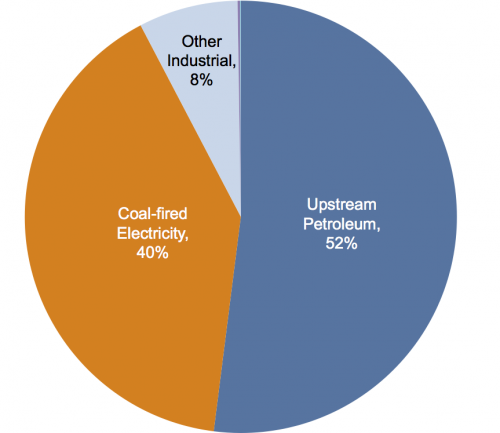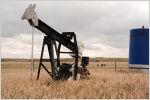
Alberta has the highest levels of sulphur dioxide air pollution in the entire country. Photo: Pembina Institute
Albertans pay a high price in terms of air quality and health complications due to the burning of coal to produce electricity, a recently released Health Canada study has found. The seemingly regular release of new data confirming the health risks associated with coal underscores the urgent need to phase the antiquated energy production method out.
Health Canada’s assessment of the body of research into the health impacts of airborne sulphur dioxide (SO2) — a by-product of coal fired power plants and oil and gas facilities — makes it clear that SO2 exposure is particularly hard on the most vulnerable: asthmatics, unborn children, children and the elderly.
The Health Canada findings — examined in our backgrounder — confirm that even short-term spikes in SO2 concentrations (average concentration over 10 minutes) have adverse impacts on health. These brief exposures result in reduced respiratory system function, including health conditions such as asthma, bronchitis and emphysema.
The study shows evidence of a connection between SO2 exposure and premature births, congenital heart defects and asthma. The study also suggests that there is a high likelihood that even low-level exposures to SO2 can have negative health effects on the pre- and post-natal development of children. Health Canada is recommending futher research to clarify if there is a cause and effect relationship.
Clearly, SO2 exposure — whether short- or long-term — is dangerous. This is important for Alberta since despite being Canada’s fourth most populous province, it has the highest levels of SO2 pollution in the country.
The numbers
In 2014 Alberta emitted over 291,000 tonnes of SO2. That compares to 259,000 tonnes emitted in the same year in Ontario, even though Alberta’s population is less than a third by comparison. Alberta also emits more SO2 than all provinces east of Ontario combined. Ontario’s emissions of SO2 dropped by 165,000 tonnes between 2000 and 2014 when it phased out all of its coal fired power plants.
In Alberta, the two largest contributors are the upstream oil and gas industry and coal-fired electricity generation. Together these two sources accounted for 92 per cent of Alberta’s SO2 pollution in 2014. Improved sulphur recovery standards from oil and gas facilities have led to lower overall SO2 pollution while concentrated growth of oil and gas operations in some regions has led to higher exposure levels. Meanwhile there has been no significant reduction of SO2 from coal-fired electricity generation in Alberta in the last 20 years.
 Emissions from coal plants are concentrated in six facilities in Alberta with the vast majority coming from three facilities upwind of Edmonton and Red Deer.
Emissions from coal plants are concentrated in six facilities in Alberta with the vast majority coming from three facilities upwind of Edmonton and Red Deer.
Coal plants are the dominant source of SO2 pollution in the Capital Region and a major contributor to wintertime smog events. In investigating these episodes, Alberta Environment determined that 69 per cent of total SO2 pollution was produced by coal-fired electricity facilities in the Capital Region.
Taking action
Progress to reduce sulphur dioxide to lower health impacts has been made across Canada. Recognizing SO2’s contribution to acid rain, past policies achieved reductions, principally from new requirements for low sulphur transportation fuels implemented in the 1990s, more stringent standards for sulphur recovery at oil and gas facilities, and most recently Ontario’s phase-out of coal-fired electricity generation.
Coal fired emissions represent the largest opportunity to make improvements in human health in Alberta. The Health Canada study confirms the necessity of the Alberta government’s plan to phase out coal by 2030. This step alone will reduce our SO2 emissions by 40 per cent — about two thirds of the current levels seen in Ontario — and Alberta would shed the title of largest SO2 polluter in the country.
Such a move would reaffirm Alberta’s role as a national climate leader and — more importantly — improve the health of all Albertans.
Andrew Read was a senior analyst with the Pembina Institute until 2017.



